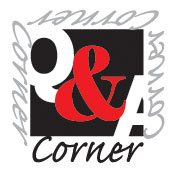|
In Focus
Win a valuable book
from Books.lk
"Reading maketh a full man," it is said and the importance of reading
need not be reiterated. And, it is with the objective of promoting the
habit of reading among children that the Junior Observer in
collaboration with Bookazone (Pvt.) Ltd; the innovators of the country's
first web portal (www.books.lk) has launched a competition to coincide
with the literary month - September.
We give a lucky reader an opportunity to win a valuable book priced
at Rs 1000 from books.lk. All you have to do is answer a the question
and mail it to the address given, on or before Friday of that week. The
name of the winner will be published later.
Here is how Bookazone will help you enter the magical world of books,
to not only entertain yourself but also enhance your knowledge.It allows
you to purchase any title of book regardless of the author, publisher,
or the country of origin. Although Bookazone web portal was limited to
English users since 2009, the latest additions of Sinhala and Tamil is
also accessible on www.poth.lk and www.puththagama.lk listing a wide
range of books written and published in local languages in addition to
what is offered in English apart from magazines, CDs and DVDs. It is
easy to access, as these sites are incorporated into their main site.
They also have more to offer with the adding of varied and popular
categories on a regular basis. Once you place an order at Bookazone and
make your payment,the deliveries are made free of charge using the best
secured mode to any part of the island. In case you don't see the title
listed in the Bookazone web portal a simple email can be sent to inquire
the availability, price, and the number of days that it will take to
source the book.
So, keep improving your general knowledge to answer the question
posed every week. And what better way to do so than by READING!

Natural history
1. Instead of teeth, the blue whale has large brush-like plates
hanging down from inside its mouth. True/False?
2. How many bones make up the giraffe's long neck?
3. Do vampire bats drink the blood of animals?
4. How do bats manage to fly by echolocation without knocking on any
objects in their path?
5. The swamp dwelling dinosaur, Diplodocus is believed to have eaten
only vegetation, yet it grew to as much as 26.5m (87 ft) in length.
True/False?
6. How many arms does a squid have?
7. What type of insects are the painted lady, the Canberwell beauty
and the common skipper?
8. Which is the heaviest flying bird?
9. Do all zebras have the same coat pattern?
10. What is a goose barnacle?
11. How is a pearl which is highly priced by humans formed by an
oyster?
12. What is known as mother of pearl?
13. Name two mammals which lay eggs?
14. Can frogs kill humans?
15. What is the most poisonous frog in Columbia?
************
Answers
Natural history
1. True. Many whales have 'baleen' teeth which they use to sieve
food. These plates strain the water out but prevent the krill, a small
fish, it gulps with the water from getting out. The whale then swallows
the krill.
2. The giraffe's long neck (which is the longest in the animal
kingdom) comprises just seven bones - the same number of bones humans
have on their short neck.
3. Yes. These bats which are found in Mexico and South America drink
the blood of animals by first puncturing the skin and then lapping up
the blood which flows from the wound.
4. Bats which fly by echolocation literally 'shout' as they fly. If
they receive an echo, they know something is in their path.
5. True.
6. A squid has 10 arms.
7. They are all butterflies.
8. The heaviest flying bird is the mute swan. An adult bird may weigh
as much as 18 kg (40 lbs)!
9. No. The various species of zebra - the Burchell's, mountain and
Grevy's all have different coat patterns. Even the various subspecies
have different coats. Though the coats all look alike superficially,
scientists can tell them apart by comparing the width of the stripes and
overall patterning.
10. A goose barnacle is a tiny marine animal related to shrimps and
crabs. It was believed long ago that the barnacle grew into gees because
they had heads resembling gees. The name originated from this belief.
11. A pearl is formed when a tiny piece of grit or sand gets trapped
inside the shell of an oyster. As this irritates the oyster it produces
a layer of mother of peal around it to prevent the particle from harming
its inner organs.A layer after layer of mother of pearl is produced to
form the pearl.
12. Mother of pearl is a substance produced by the oyster to normally
coat the inside of its shell.
13. Mammals usually give birth to live young. However, there are
mammals such as the platypus and the echidna also known as the spiny ant
eater, which lay eggs.
14. Yes. Some brilliantly coloured frogs of Central and South America
produce a venom which can kill humans. In fact some natives living in
the forests in these areas use the poison from these frogs to coat their
arrows. The frogs are known as poison arrow frogs.
15. The most poisonous frog in Columbia is the Kokoi. It is a 2.5 cm
(1 in) long frog but its skin provides poison sufficient to kill 50 men! |

